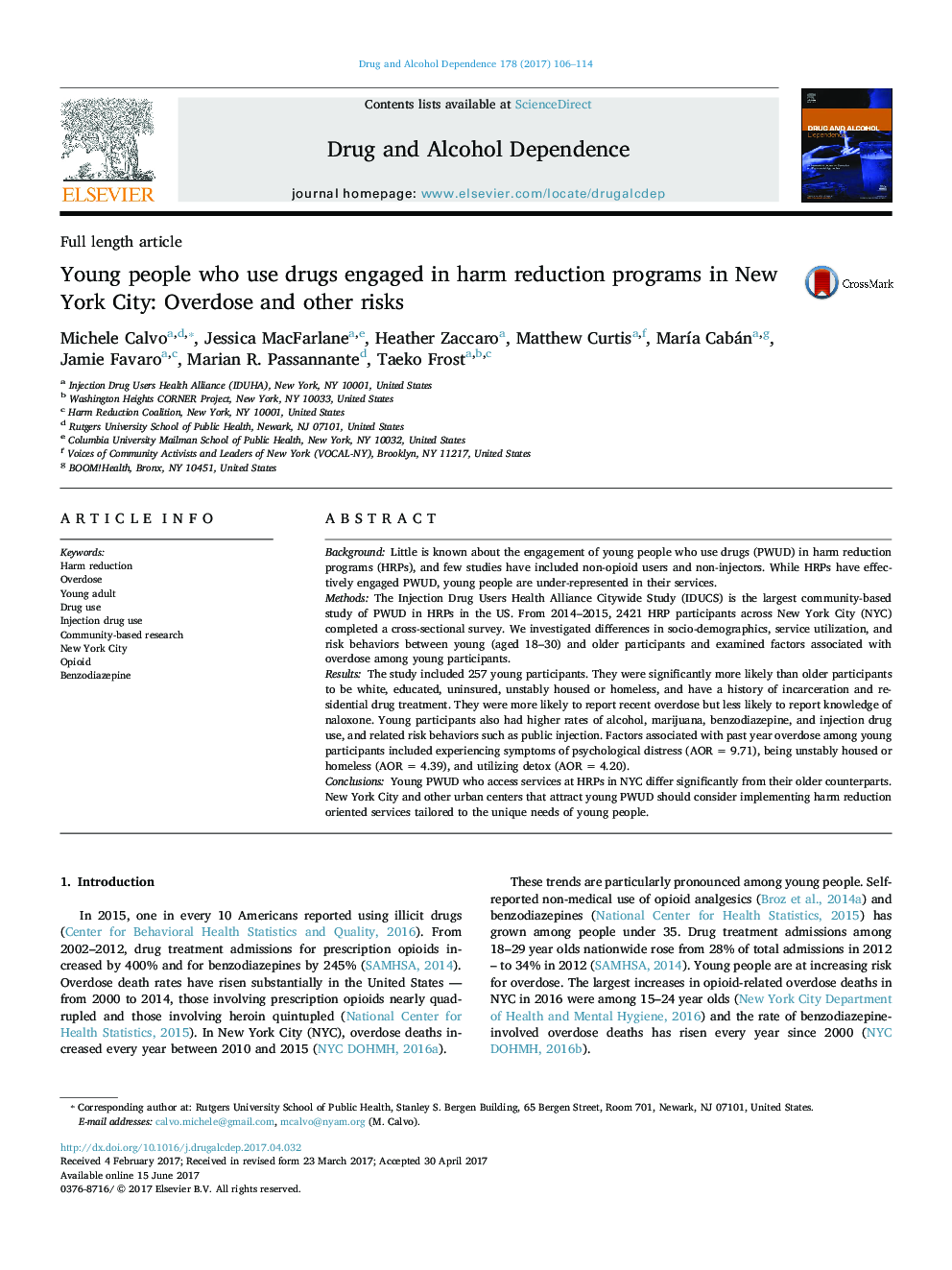| کد مقاله | کد نشریه | سال انتشار | مقاله انگلیسی | نسخه تمام متن |
|---|---|---|---|---|
| 5120339 | 1486113 | 2017 | 9 صفحه PDF | دانلود رایگان |
- Young (aged 18-30) people who use drugs (PWUD) make up 11.4% of Harm Reduction Programs (HRP) participants in New York City (NYC).
- They differ from older PWUD in socio-demographics, drug use and health risks.
- They have higher rates of overdose, arrest, public injection and syringe sharing.
- Heroin, novel/rare drugs and non-prescribed methadone were associated with overdose.
- Psychological distress, unstable housing and detox were associated with overdose.
BackgroundLittle is known about the engagement of young people who use drugs (PWUD) in harm reduction programs (HRPs), and few studies have included non-opioid users and non-injectors. While HRPs have effectively engaged PWUD, young people are under-represented in their services.MethodsThe Injection Drug Users Health Alliance Citywide Study (IDUCS) is the largest community-based study of PWUD in HRPs in the US. From 2014-2015, 2421 HRP participants across New York City (NYC) completed a cross-sectional survey. We investigated differences in socio-demographics, service utilization, and risk behaviors between young (aged 18-30) and older participants and examined factors associated with overdose among young participants.ResultsThe study included 257 young participants. They were significantly more likely than older participants to be white, educated, uninsured, unstably housed or homeless, and have a history of incarceration and residential drug treatment. They were more likely to report recent overdose but less likely to report knowledge of naloxone. Young participants also had higher rates of alcohol, marijuana, benzodiazepine, and injection drug use, and related risk behaviors such as public injection. Factors associated with past year overdose among young participants included experiencing symptoms of psychological distress (AORÂ =Â 9.71), being unstably housed or homeless (AORÂ =Â 4.39), and utilizing detox (AORÂ =Â 4.20).ConclusionsYoung PWUD who access services at HRPs in NYC differ significantly from their older counterparts. New York City and other urban centers that attract young PWUD should consider implementing harm reduction oriented services tailored to the unique needs of young people.
Journal: Drug and Alcohol Dependence - Volume 178, 1 September 2017, Pages 106-114
